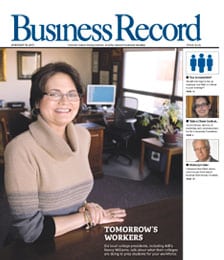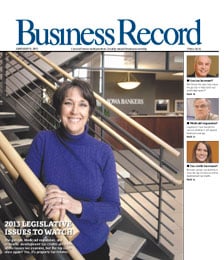It’s time to think about retention

.floatimg-left-hort { float:left; } .floatimg-left-caption-hort { float:left; margin-bottom:10px; width:300px; margin-right:10px; clear:left;} .floatimg-left-vert { float:left; margin-top:10px; margin-right:15px; width:200px;} .floatimg-left-caption-vert { float:left; margin-right:10px; margin-bottom:10px; font-size: 12px; width:200px;} .floatimg-right-hort { float:right; margin-top:10px; margin-left:10px; margin-bottom:10px; width: 300px;} .floatimg-right-caption-hort { float:left; margin-right:10px; margin-bottom:10px; width: 300px; font-size: 12px; } .floatimg-right-vert { float:right; margin-top:10px; margin-left:10px; margin-bottom:10px; width: 200px;} .floatimg-right-caption-vert { float:left; margin-right:10px; margin-bottom:10px; width: 200px; font-size: 12px; } .floatimgright-sidebar { float:right; margin-top:10px; margin-left:10px; margin-bottom:10px; width: 200px; border-top-style: double; border-top-color: black; border-bottom-style: double; border-bottom-color: black;} .floatimgright-sidebar p { line-height: 115%; text-indent: 10px; } .floatimgright-sidebar h4 { font-variant:small-caps; } .pullquote { float:right; margin-top:10px; margin-left:10px; margin-bottom:10px; width: 150px; background: url(http://www.dmbusinessdaily.com/DAILY/editorial/extras/closequote.gif) no-repeat bottom right !important ; line-height: 150%; font-size: 125%; border-top: 1px solid; border-bottom: 1px solid;} .floatvidleft { float:left; margin-bottom:10px; width:325px; margin-right:10px; clear:left;} .floatvidright { float:right; margin-bottom:10px; width:325px; margin-right:10px; clear:left;}
Prepare for a talent war. David Stillman, co-author of “The M-Factor: How the Millennial Generation Is Rocking the Workplace,” told a Des Moines audience last week that 70 percent of American employees have said they plan to leave their current jobs when the economy improves.
“The war for talent is going to be ferocious,” Stillman said. “It is going to haunt every corporation.”
Stillman is a co-founder of BridgeWorks, an organization devoted to studying and speaking about how different generations function in the workplace. He came to town to speak at an event sponsored by the Business Record.
To keep the talent it wants, a company needs to understand the key characteristics of the four generations now at work, Stillman said. “Seventy-five percent of workers say generational differences get in the way,” he said. “Let’s stop worrying about who’s right and who’s wrong. You have to go way beyond age to understand the generational events that shape generational personalities.”
Stillman defined the four generations as Traditionalists, Baby Boomers, Generation X and the Millennials.
Traditionalists, people born before 1946, have seen all kinds of change in their lives. “The stereotype is that they’re opposed to change,” Stillman said. “But the problem is not the change, but how it’s proposed. If you dismiss their legacy, they dig in. You need to present changes as ideas to build on their legacy – evolution, not revolution.”
Baby Boomers, born between 1946 and 1964, are the largest generation in the picture at 80 million strong. They’re also “the worst generation at delegating, ever,” Stillman said. As a result, they’re burning out – but not mentioning it to their managers.
Asked five years ago about the greatest possible workplace reward, Boomers mentioned things like a fancy title and a corner office, Stillman said. In a similar survey last year, their top answer was “time off.”
And yet, they hesitate to give up any work. “You need to reassure them that you’re trying to free them from some of the minutiae to work on new opportunities,” he said.
Generation X workers, born between 1965 and 1981, will always be able to find jobs, simply because they are so few in number – 46 million – compared with the other generations. “They’re going to be a hot ticket in this economy,” Stillman said.
As a result, they’re more interested in career security than job security. “You provide that with training,” he said. “The more they learn, the more they stay.”
Also, keep them moving, even if it’s not up the career ladder. It’s a “Rubik’s Cubicle” situation, in Stillman’s term. “Gen X loves lateral moves; as long as they’re learning something new,” he said.
Millennials, born between 1982 and 2000, are the stars of Stillman’s newest book and are rated the toughest generation to work with – even by the Millennials themselves. “From Day 1, they want to do work that has meaning,” Stillman said.
The youngest workers in the office, they are extremely collaborative. “They see constant checking in as being efficient,” Stillman said.
Many Millennials were consulted on family vacation planning and even home buying as they grew up. Naturally, they want to provide input at work. “Let them pipe up,” Stillman said. “Then the mentoring process begins.”
Stillman pointed out more than once that many managers who complain about Millennial behavior at work are fostering the same behavior at home with their own children. They also might be giving those future workers the wrong idea about careers. When parents come home and rant about the problems at work, “we’re painting an ugly picture of the workplace,” he said. “We’ve got to make it sound like fun.”







